Video: the spectacular Tulbagh Mountain Vineyards, South Africa
One of the short films from my recent South Africa trip: the beautiful TMV, a biodynamically run estate in Tulbagh.
Labels: biodynamics, south africa, video
mainly wine...
One of the short films from my recent South Africa trip: the beautiful TMV, a biodynamically run estate in Tulbagh.
Labels: biodynamics, south africa, video
Labels: biodynamics, Italy, lambrusco
Labels: Alsace, biodynamics, Riesling
David Motion of The Winery has uploaded the segments he and I did on BBC news a while back, talking about why wine tastes different on different days:
Labels: biodynamics, video
Labels: biodynamics, california, sangiovese
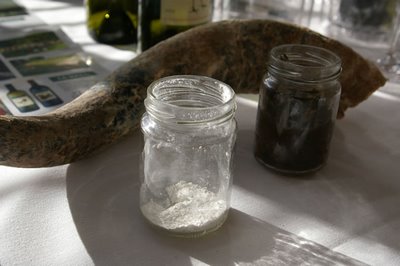 A leading expert on biodynamics kindly agreed to answer some queries I had about this unusual but increasingly important way of growing wine grapes. Here are the 12 questions I sent him. Have you got any you'd like to add to the list?
A leading expert on biodynamics kindly agreed to answer some queries I had about this unusual but increasingly important way of growing wine grapes. Here are the 12 questions I sent him. Have you got any you'd like to add to the list?
Labels: biodynamics, viticulture
Labels: Australia, biodynamics
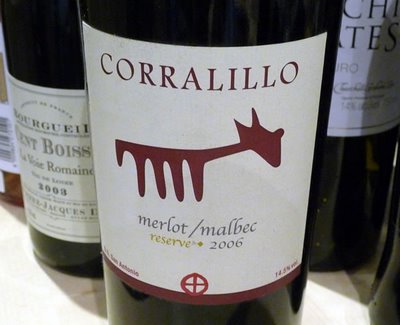 Last night we had dinner with some friends. I always bring a few bottles along, simply because I have access to a lot of nice samples and it seems appropriate to share them around. But my buddy Karl often springs a nice surprise by bringing something interesting - and I really appreciate this. He brought along a bottle of Niepoort's 'Drink Me', which he'd bought from Hampton Hill independent merchant Noble Green. It's one of the most brilliantly packaged wines I know, with the label consisting of a series of 11 cartoons by Steven Appleby called 'Message in the Bottle'.
Last night we had dinner with some friends. I always bring a few bottles along, simply because I have access to a lot of nice samples and it seems appropriate to share them around. But my buddy Karl often springs a nice surprise by bringing something interesting - and I really appreciate this. He brought along a bottle of Niepoort's 'Drink Me', which he'd bought from Hampton Hill independent merchant Noble Green. It's one of the most brilliantly packaged wines I know, with the label consisting of a series of 11 cartoons by Steven Appleby called 'Message in the Bottle'.Labels: biodynamics, Chile, Douro, Portugal
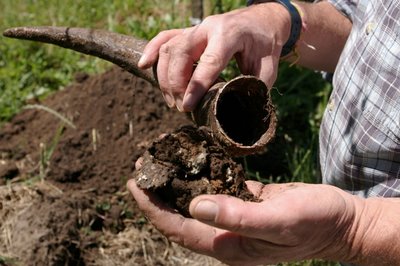 It has been fascinating to see biodynamic wine covered on mainstream news (both TV and newspapers) here in the UK over the last few days. So I thought I'd draw readers' attention to some articles on the topic.
It has been fascinating to see biodynamic wine covered on mainstream news (both TV and newspapers) here in the UK over the last few days. So I thought I'd draw readers' attention to some articles on the topic.Labels: biodynamics
So I followed up yesterday's turn on Sky News with a couple of slots on BBC News this morning. It meant an early start - the car came for me before 6 am, and I was whisked off to BBC TV Centre in Shepherds Bush. Another session in make-up (no airbrush this time) then off to the tiny green room, where I met up with David Motion of The Winery (an excellent London wine shop) who I was to appear with on the programme.
Labels: biodynamics
 I was on Sky News today talking about biodynamic wine, and Tesco's revelation that they hold press tastings according to the biodynamic calendar. It was a fun experience. I got picked up, driven to the studios in Osterley, and went straight through to make-up. 'Do you do airbrushing?', she asks. I nod as if I knew what she was talking about. With my blemishes covered, I'm through to the green room. Then after a quick flick through a newspaper I'm onto the set and wired up, and then we're on air. A few minutes later, it's all over.
I was on Sky News today talking about biodynamic wine, and Tesco's revelation that they hold press tastings according to the biodynamic calendar. It was a fun experience. I got picked up, driven to the studios in Osterley, and went straight through to make-up. 'Do you do airbrushing?', she asks. I nod as if I knew what she was talking about. With my blemishes covered, I'm through to the green room. Then after a quick flick through a newspaper I'm onto the set and wired up, and then we're on air. A few minutes later, it's all over.Labels: biodynamics, video
A short film from a visit to one of the leading Oregon Pinot Noir producers, Beaux Freres.
Labels: biodynamics, oregon, video
A short film from a visit to Doug Tunnell's Brick House winery (reported in detail here). We begin by looking at the compost heap...
Labels: biodynamics, gamay, oregon, pinot noir
Regular readers will know that I'm quite a fan of many biodynamic wines, as well as being interested in biodynamics as a way of running vineyards. But, as a scientist I'm sceptical about some of its claims, although I do recognize that there are aspects of it that could have efficacy in the vineyard and be explainable by mechanisms other than those claimed by biodynamic practitioners.
Bonny Doon's Randall Graham doesn't need a consultant — he hired Biodynamics expert Corderey as his full-time viticulturist. Corderey, a brusque, strapping Frenchman who rolls his own cigarettes, has turned Graham on to the power of sensitive crystallizations. Originally developed by Steiner disciple Ehrenfried Pfeiffer in the 1930s, crystallization is a process in which a dab of material – in this case, wine — is mixed into a copper chloride solution in a Petri dish. It is left in a small oven to evaporate overnight, leaving a residue of intricately formed crystal patterns. Corderey claims the crystals are the tangible mark of the "life forces" within the wines. Boltlike veins of crystals indicate that the vines are young and unfocused, like a child with a short attention span. Denser and more organized patterns indicate maturity and age. He glances up from his computer. "You know," he says with a smile, "I also crystallize people."
Corderey had a co-worker spend the day with a vial of wine in her pocket. He then crystallized the wine from the vial and compared it to a control sample. He would not reveal what he divined from the crystals, but said that he stunned the co-worker by pinpointing "exactly where she was in life." When SF Weekly suggested that someone could merely take a sip of wine, spit it out, and have Corderey crystallize that, he nodded — that could work, too. "You see this?" he said, gesturing toward a choppy swirl magnified many times on his computer screen. Beneath the crystallization, a label read "2007 Albarino exposed to AC/DC Highway to Hell." Corderey had played the 1979 rock anthem to a glass of wine. He then played Native American music to another glass — resulting in a much smoother, more organized crystallization. "You can see the connection — these people work with nature and not against it."
Labels: biodynamics
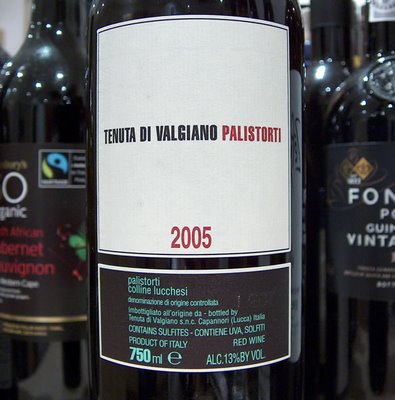 It's been a busy day. After seven months of just wine, I've taken on a science gig, producing a report from a two day conference on evaluating medical research. Feels a bit strange to be back in the world of science, but I figure it is important to keep up with it, seeing as wine science has been such an important (and modestly lucrative) field for me. A change of scenery helps keep you fresh.
It's been a busy day. After seven months of just wine, I've taken on a science gig, producing a report from a two day conference on evaluating medical research. Feels a bit strange to be back in the world of science, but I figure it is important to keep up with it, seeing as wine science has been such an important (and modestly lucrative) field for me. A change of scenery helps keep you fresh.Labels: biodynamics, Italy, sangiovese, Tuscany
Labels: biodynamics, New Zealand, pinot noir, video
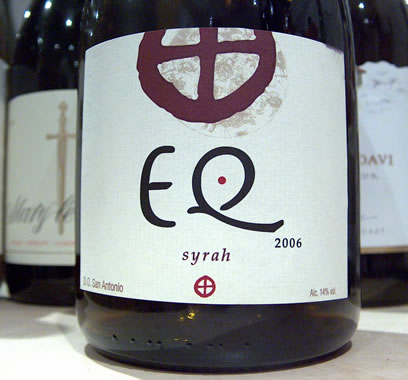
Labels: biodynamics, Chile, syrah
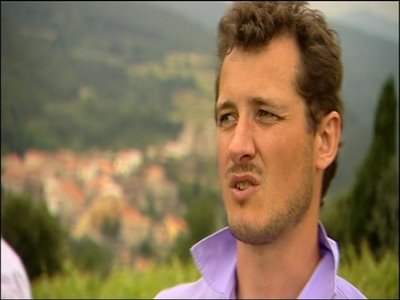 Monty Waldin, a British wine writer who has been living in Italy for the last few years, is one of the best known commentators on (and advocates of) biodynamic wine growing. He's the focus of a new TV series, Chateau Monty, which begins on Channel 4 (UK) tomorrow night. The program follows his efforts to make wine biodynamically in France's Roussillon region, and I have reviewed the first episode on the main wineanorak site here. I think it's worth a watch, and it's good that wine is back on national TV.
Monty Waldin, a British wine writer who has been living in Italy for the last few years, is one of the best known commentators on (and advocates of) biodynamic wine growing. He's the focus of a new TV series, Chateau Monty, which begins on Channel 4 (UK) tomorrow night. The program follows his efforts to make wine biodynamically in France's Roussillon region, and I have reviewed the first episode on the main wineanorak site here. I think it's worth a watch, and it's good that wine is back on national TV.Labels: biodynamics, Roussillon, TV
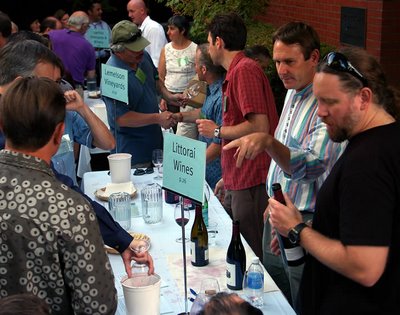
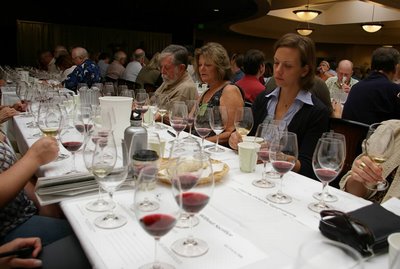 This morning we had our seminar on sustainability. We began with the Jasper (Morris) and Dominique (Lafon) show, which Jasper chaired fantastically. We tasted Dominique's wines as he told us about his journey to biodynamie. We were about two thirds of the way through when one of the audience asked whether Dom could explain more about how he uses Vitamin E in his winemaking. It was a wonderful moment.
This morning we had our seminar on sustainability. We began with the Jasper (Morris) and Dominique (Lafon) show, which Jasper chaired fantastically. We tasted Dominique's wines as he told us about his journey to biodynamie. We were about two thirds of the way through when one of the audience asked whether Dom could explain more about how he uses Vitamin E in his winemaking. It was a wonderful moment.Labels: biodynamics, Burgundy, oregon, sustainability
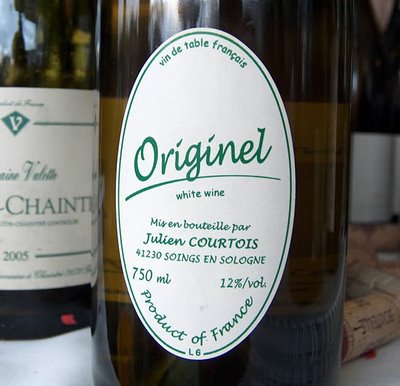 France Under One Roof is the title of a large annual tasting held here in the UK, the 2008 installment of which I attended today. Held at the Nursery Pavillon, Lords, it's an event that brings together all manner of French wines, from cheap branded bottles to some smart high-end stuff.
France Under One Roof is the title of a large annual tasting held here in the UK, the 2008 installment of which I attended today. Held at the Nursery Pavillon, Lords, it's an event that brings together all manner of French wines, from cheap branded bottles to some smart high-end stuff.Labels: biodynamics, France, Loire, natural wine
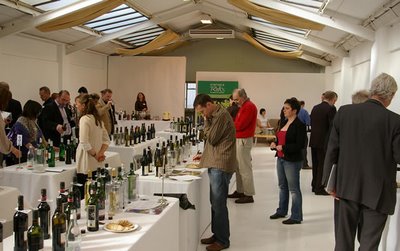 Spent an enjoyable day tasting the range of UK merchant Vintage Roots. They are unique in that they only stock organic/biodynamic wine.
Spent an enjoyable day tasting the range of UK merchant Vintage Roots. They are unique in that they only stock organic/biodynamic wine.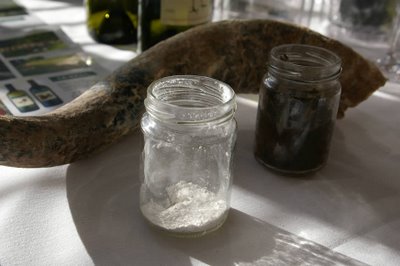
Labels: biodynamics, organics
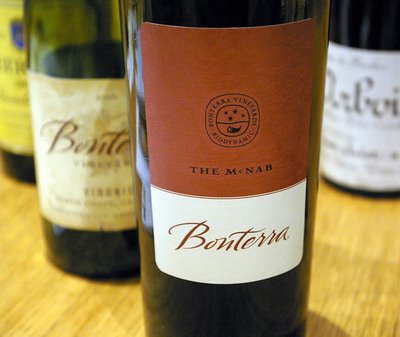 I've had mixed feelings in the past about the Bonterra wines, if I'm honest. I've enjoyed them without falling in love with them, and I have to admit to being slightly suspicious by the way that Brown Forman (the parent company) have seemed to over-play their organic hand. It just seems like there's a disconnect between big company/corporate marketing strategy and the generally smaller scale organic/biodynamic approach.
I've had mixed feelings in the past about the Bonterra wines, if I'm honest. I've enjoyed them without falling in love with them, and I have to admit to being slightly suspicious by the way that Brown Forman (the parent company) have seemed to over-play their organic hand. It just seems like there's a disconnect between big company/corporate marketing strategy and the generally smaller scale organic/biodynamic approach.Labels: biodynamics, california, organics
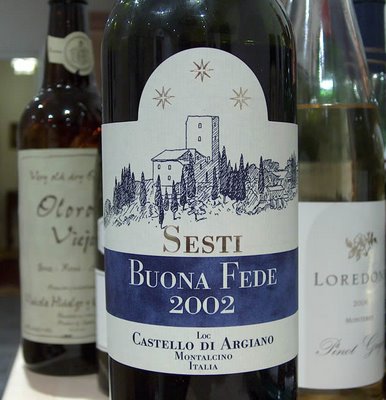 Very interesting wine tonight, after a day that started off foggy and opaque, but which ended up bright and sunny.
Very interesting wine tonight, after a day that started off foggy and opaque, but which ended up bright and sunny.Labels: biodynamics, Italy
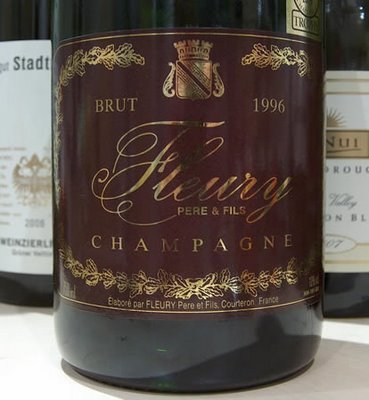 It's a quiet Monday evening, so time for some fizz. And not just any old fizz, but a Vintage Champagne from one of the last century's great vintages, and from a biodynamic grower to boot. It's a really fantastic wine, and it should have been saved for a special occasion. But I don't feel too bad for opening it...
It's a quiet Monday evening, so time for some fizz. And not just any old fizz, but a Vintage Champagne from one of the last century's great vintages, and from a biodynamic grower to boot. It's a really fantastic wine, and it should have been saved for a special occasion. But I don't feel too bad for opening it...Labels: biodynamics, Champagne
 It turns out that the last segment of my short trip, added as a bit of an afterthought, turned out to be one of the most interesting and inspiring. What a country New Zealand is!
It turns out that the last segment of my short trip, added as a bit of an afterthought, turned out to be one of the most interesting and inspiring. What a country New Zealand is!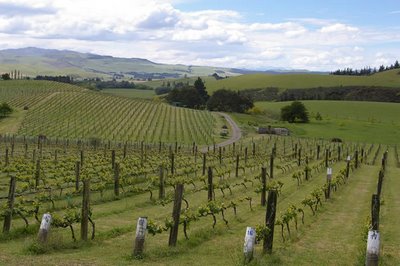
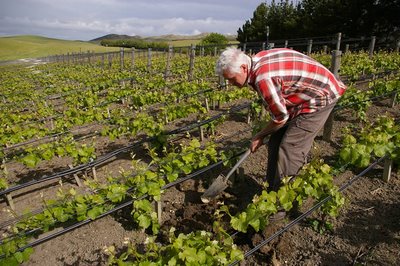
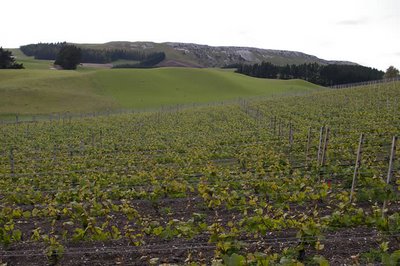
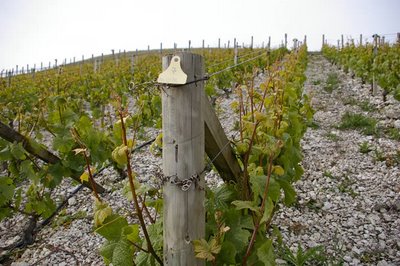 [I'm writing this from Changi Airport, where I have 5.5 hours to recover before the next leg. Free broadband internet access this time: I'm up on floor 3 near the business class lounges, which I think is the explanation. The contrast of the relaxed ease and warmth of Changi with the clamour and busyness of Heathrow is stark.]
[I'm writing this from Changi Airport, where I have 5.5 hours to recover before the next leg. Free broadband internet access this time: I'm up on floor 3 near the business class lounges, which I think is the explanation. The contrast of the relaxed ease and warmth of Changi with the clamour and busyness of Heathrow is stark.] Labels: biodynamics, New Zealand, viticulture
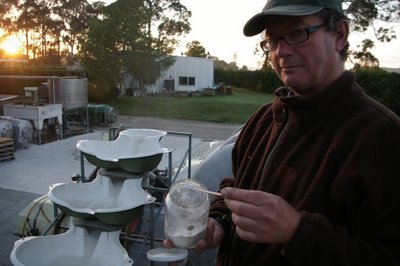 Wellington Airport has free wifi access. How cool is that? I've been unable to blog for the last few days because I haven't had any internet access, but aside from that, I've hardly had a spare moment. So while I've got time (approximately 20 minutes until the next flight) and internet access, I'll try to give a brief update.
Wellington Airport has free wifi access. How cool is that? I've been unable to blog for the last few days because I haven't had any internet access, but aside from that, I've hardly had a spare moment. So while I've got time (approximately 20 minutes until the next flight) and internet access, I'll try to give a brief update.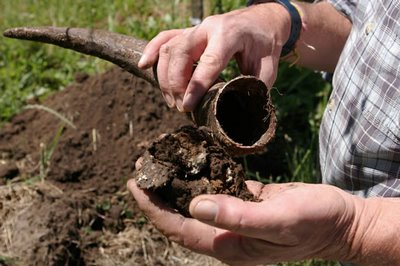
Labels: biodynamics, hawkes bay, New Zealand
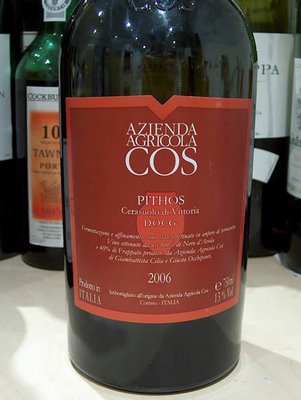
Labels: biodynamics, natural wine, sicily
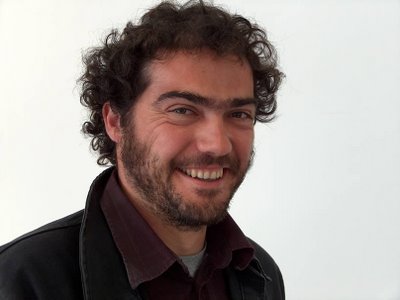 A thrilling tasting today, held by Les Caves de Pyrene at the Delfina Gallery near Bermondsey Street. The theme of the tasting was 'real wine', and these are the sorts of wines that make you realise what it was that made you excited about wine in the first place. No, not absurd Californian Cabernets with 99900 points and a price tag to make you weep, containg long-hang-time dead, saggy fruit tricked up by new oak, and delivered in a heavy bottle with a big punt. These were wines with a sense of place, honestly made and sensibly priced, presented by people with calluses on their hands.
A thrilling tasting today, held by Les Caves de Pyrene at the Delfina Gallery near Bermondsey Street. The theme of the tasting was 'real wine', and these are the sorts of wines that make you realise what it was that made you excited about wine in the first place. No, not absurd Californian Cabernets with 99900 points and a price tag to make you weep, containg long-hang-time dead, saggy fruit tricked up by new oak, and delivered in a heavy bottle with a big punt. These were wines with a sense of place, honestly made and sensibly priced, presented by people with calluses on their hands.Labels: biodynamics, natural wine
Just thought I'd point out some articles I've dug up recently in my web travels.
Labels: biodynamics, minerality, oak, wine science
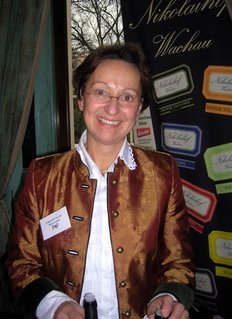 Big tastings. We all go to them. Have to. But we all hate them. Not for the fact that we get to meet lots of producers and colleagues: that's what these events are good for. But because it's really hard to do wines justice when you are tasting one after another in an often crowded, noisy environment where it is very hard to concentrate, and where your palate definitely undergoes some sort of transformation in response to the physical assault of repeated challenge by acidic, alcoholic and frequently tannic liquids.
Big tastings. We all go to them. Have to. But we all hate them. Not for the fact that we get to meet lots of producers and colleagues: that's what these events are good for. But because it's really hard to do wines justice when you are tasting one after another in an often crowded, noisy environment where it is very hard to concentrate, and where your palate definitely undergoes some sort of transformation in response to the physical assault of repeated challenge by acidic, alcoholic and frequently tannic liquids.Labels: austria, biodynamics